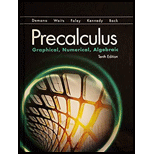
a.
To graph: The
Given Information:
The tables is defined as,
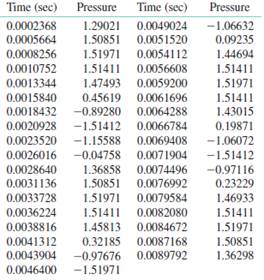
Explanation:
Consider the given table,
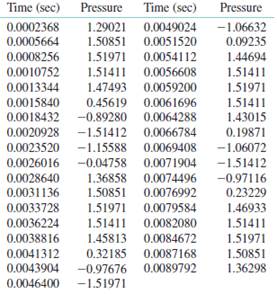
Now, use graphing calculator to make the scatter plot and set the given window.
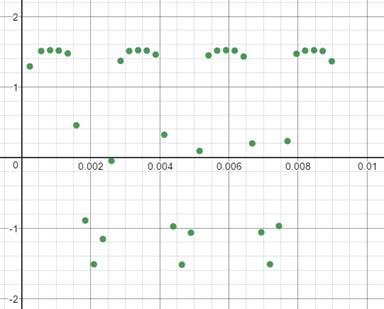
Therefore, the above graph is the required graph.
b.
To determine: The value of a , b , and h and find the sinusoidal model
The obtained equation is
Given Information:
Refer the given table.
Explanation:
Consider the given information,
Refer the given table.
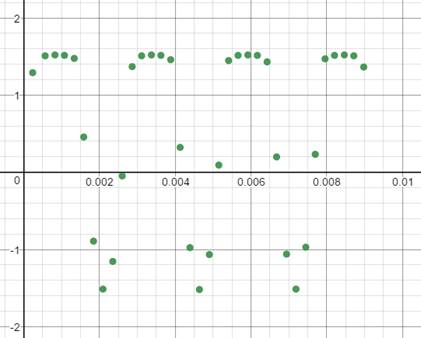
Determine the regression model in the form
Compare the above model with
Now, plot the graph of the equation over the scatter plot.
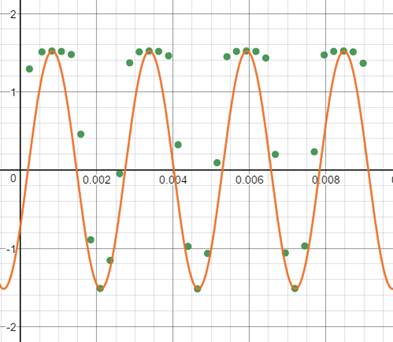
Therefore, the obtained equation is
c.
To determine: The frequency of the sinusoidal model.
The obtained frequency is
Given Information:
The best fit equation is
Explanation:
Consider the given information,
Now, compute the frequency.
Therefore, the required value is
d.
To determine: The musical note produced by the tuning fork used to create by using the previous part (c).
The obtained frequency is
Given Information:
The obtained frequency in previous part (a) is
Explanation:
Consider the given information,
According to the Table 4.5,the musical note corresponding to
Therefore, the musical note is
Chapter 4 Solutions
EBK PRECALCULUS:GRAPHICAL,...-NASTA ED.
 Calculus: Early TranscendentalsCalculusISBN:9781285741550Author:James StewartPublisher:Cengage Learning
Calculus: Early TranscendentalsCalculusISBN:9781285741550Author:James StewartPublisher:Cengage Learning Thomas' Calculus (14th Edition)CalculusISBN:9780134438986Author:Joel R. Hass, Christopher E. Heil, Maurice D. WeirPublisher:PEARSON
Thomas' Calculus (14th Edition)CalculusISBN:9780134438986Author:Joel R. Hass, Christopher E. Heil, Maurice D. WeirPublisher:PEARSON Calculus: Early Transcendentals (3rd Edition)CalculusISBN:9780134763644Author:William L. Briggs, Lyle Cochran, Bernard Gillett, Eric SchulzPublisher:PEARSON
Calculus: Early Transcendentals (3rd Edition)CalculusISBN:9780134763644Author:William L. Briggs, Lyle Cochran, Bernard Gillett, Eric SchulzPublisher:PEARSON Calculus: Early TranscendentalsCalculusISBN:9781319050740Author:Jon Rogawski, Colin Adams, Robert FranzosaPublisher:W. H. Freeman
Calculus: Early TranscendentalsCalculusISBN:9781319050740Author:Jon Rogawski, Colin Adams, Robert FranzosaPublisher:W. H. Freeman
 Calculus: Early Transcendental FunctionsCalculusISBN:9781337552516Author:Ron Larson, Bruce H. EdwardsPublisher:Cengage Learning
Calculus: Early Transcendental FunctionsCalculusISBN:9781337552516Author:Ron Larson, Bruce H. EdwardsPublisher:Cengage Learning





